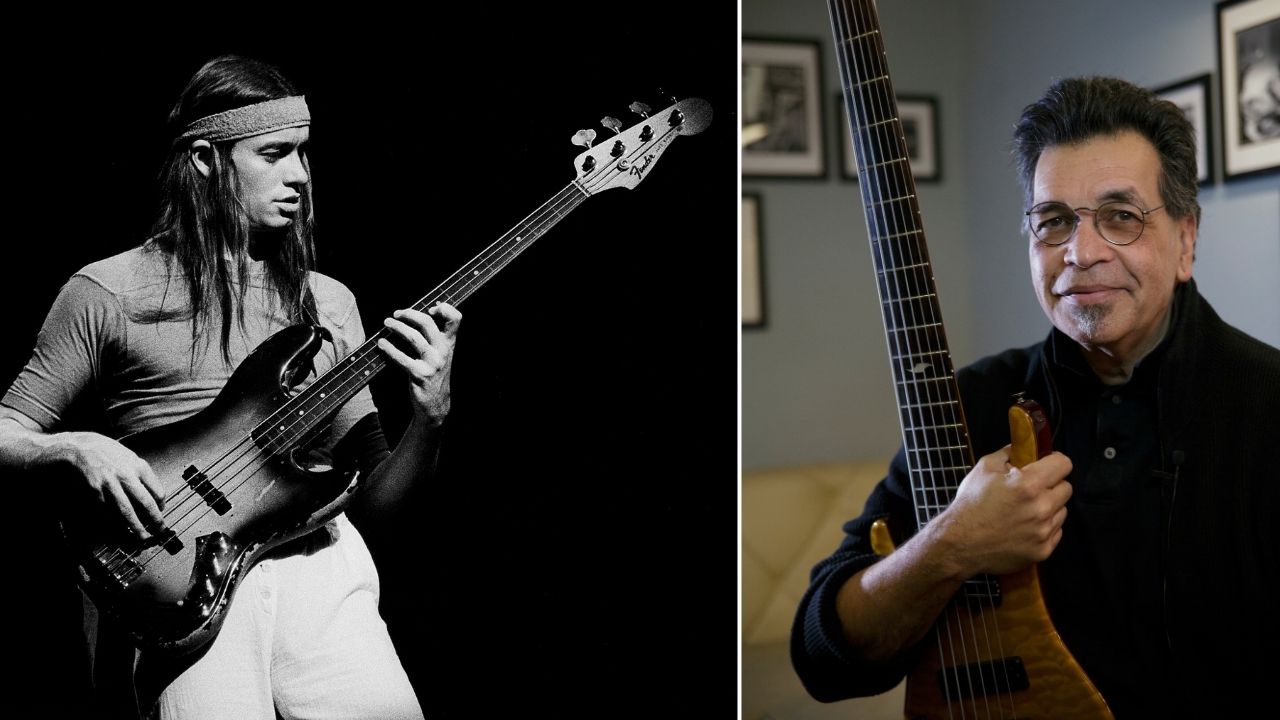Best Jazz Bass 2025: recommended J-Bass guitars to suit all levels, budgets and tastes
There’s a Jazz Bass for everyone. Here's our expert pick of iconic offsets from Fender and beyond
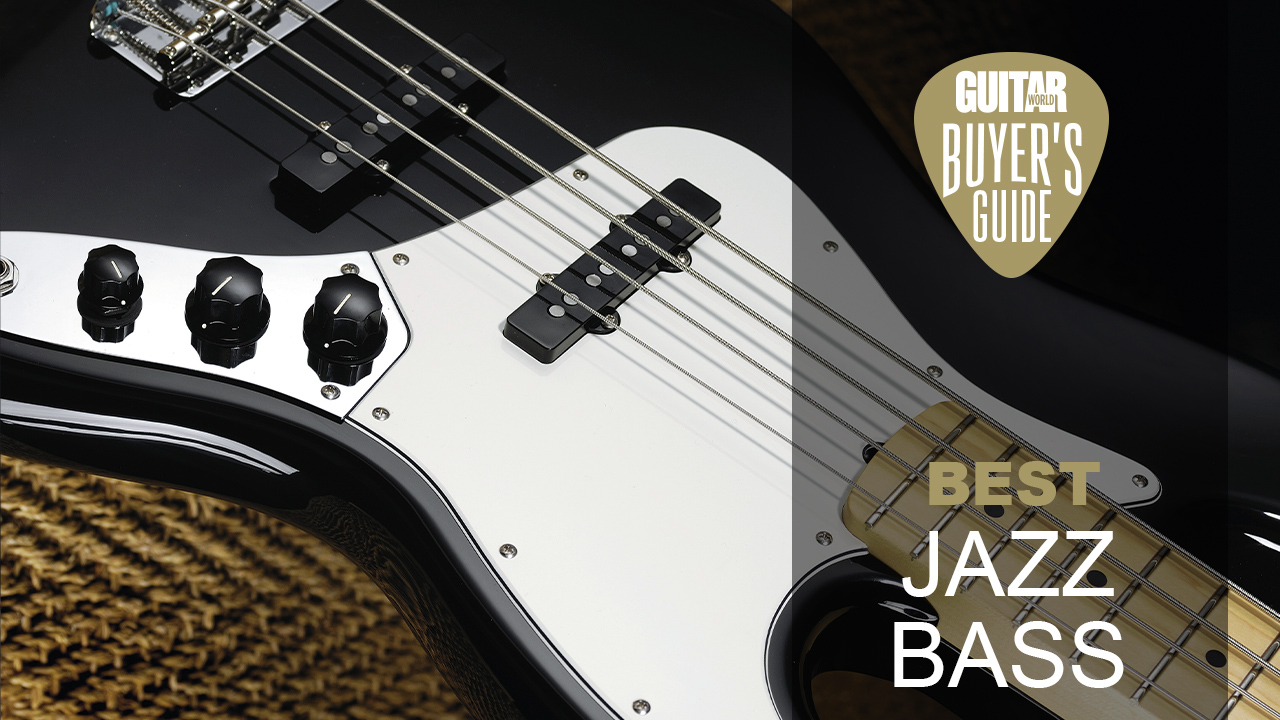
For many bass players it’s a simple choice; are you a J or P player? If you chose J, which stands for jazz, then you’re in the right place as we're here to round up the best jazz bass models available today.
The ‘JB’ is known for its versatile tone and comfortable playability, usually comprising two single-coil pickups that can be blended together or used independently, giving the player a wide range of sonic possibilities. The jazz also has a slimmer neck than the Precision Bass, making it easier to play for those with smaller hands. The jazz bass body is also offset, similar to a Fender Jaguar or Jazzmaster.
This guide covers the best jazz bass styles for every budget, including some non-Fender models for good measure, helping you zero in on the specific model to suit your needs.
We've also included some buying advice towards the bottom of the page if you're looking for more guidance.
Best jazz bass: Guitar World Recommends
Visually, and in terms of playability, the jazz bass has similarities whichever price bracket you’re shopping in. For beginners, it’s easy to recommend the Harley Benton JB75, which offers the full jazz experience at a very low price.
You’ll quickly outgrow these though which is why, if you’re able, we’d recommend pushing towards the higher-priced Sire Marcus Miller v7. These models come with plenty of high praise from the bass world, and could feasibly serve as a beginner and intermediate instrument all in one.
If you have your sights set on a true Fender jazz bass, the Fender Player Series Jazz bass is a great option for the budget-conscious player.
Best jazz bass: Product guide
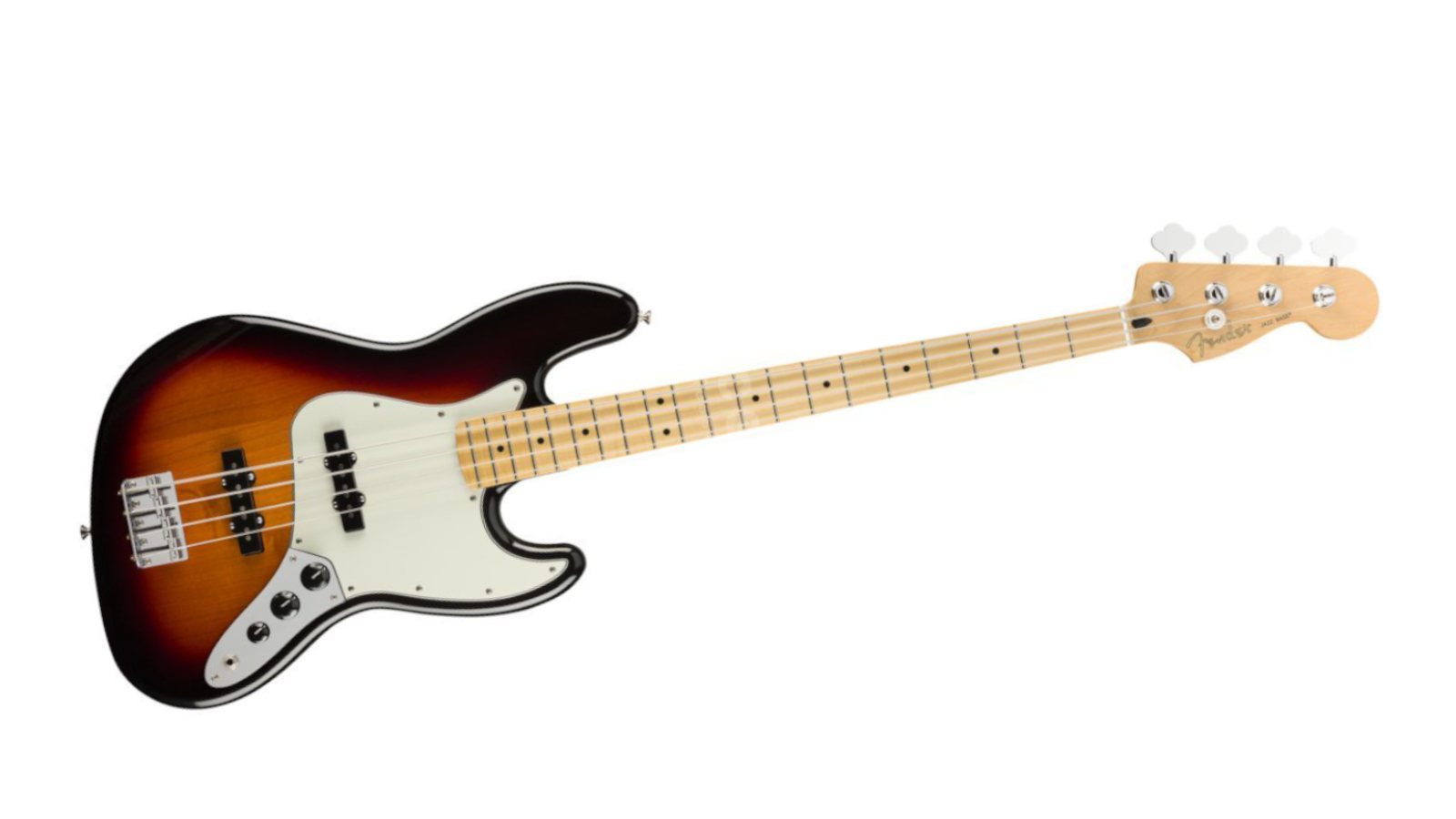
1. Fender Player Series Jazz Bass
Our expert review:
Specifications
Reasons to buy
Reasons to avoid
It makes sense to start with the option most players will consider at some point in their playing careers. The Fender Player Series Jazz Bass is the mid-range option which offers a step up from the basic, entry-level models, yet doesn’t quite hit the heights (or the four-figure price tag) of the US-made versions.
For a sensible amount of money, you get a very sensible bass indeed. We like the range of colorways and find the alder bodies on these variants ensure they’re lightweight and sound great across a range of musical genres.

2. Harley Benton JB75
Our expert review:
Specifications
Reasons to buy
Reasons to avoid
If imitation is the most sincere form of flattery, then Fender must be blushing when it sees the Harley Benton JB75. As a near carbon-copy of the recent Squier Vintage Modified jazz model, this is treading well-worn ground but it’s still easy to recommend to new players. The American ash body gives it a nicely resonant sound, while the neck is easy and comfortable to learn on.
We found the pickups slightly lacking in power, but at this price we could easily see the JB75 acting as a blank canvas for enthusiastic modders to tear it down and rebuild it in their own image. Hard to find too much fault at this price.
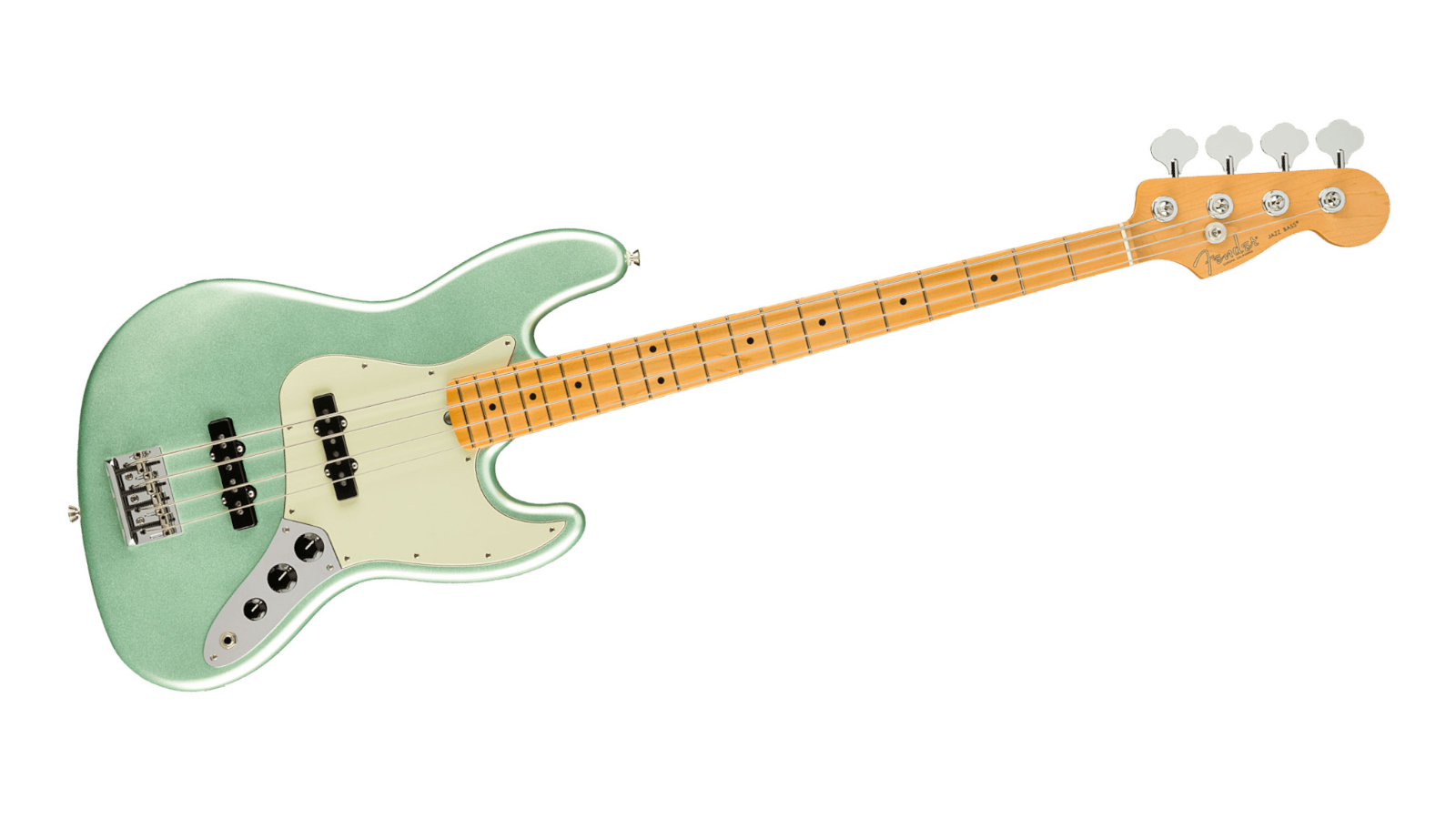
3. Fender American Pro II Jazz Bass
Our expert review:
Specifications
Reasons to buy
Reasons to avoid
If you’re looking for the peak of jazz bass performance, then Fender has you covered. The Fender American Pro II is its flagship model, packing in the pinnacle of high-end bass design, playability and comfort. Of particular note are the V-Mod II pickups, which excel across any genre and deliver a heft and reassuring weight to your performance.
In Fender’s marketing spiel for the American Pro, it claims the neck has been newly sculpted for better hand positioning, and we certainly found it to be among the more comfortable on test, although for nearly $/£2k you would expect it to feel like a velvet glove…
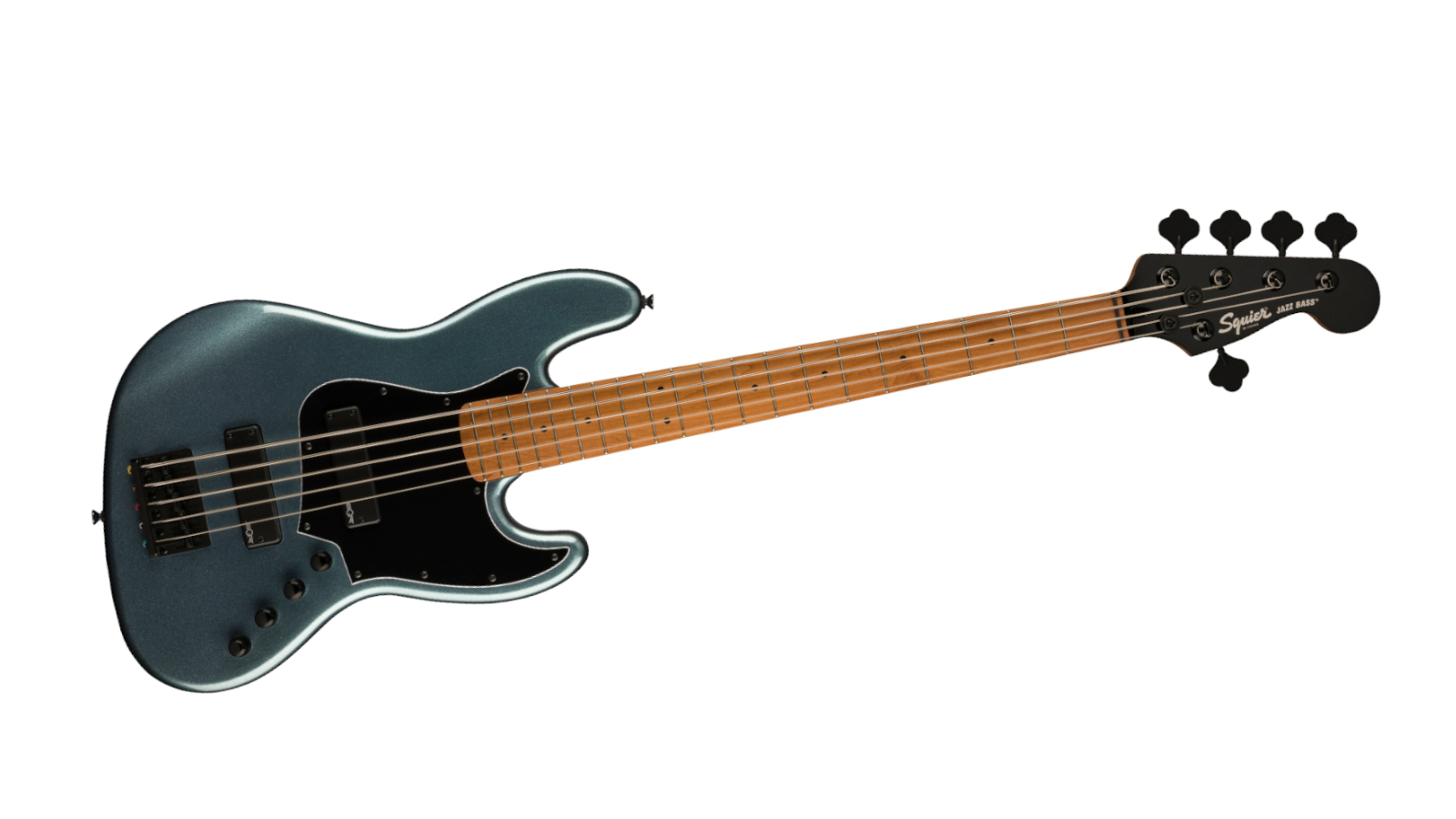
4. Squier Contemporary Active Jazz V
Our expert review:
Specifications
Reasons to buy
Reasons to avoid
The Squier Contemporary Active jazz bass takes things in a slightly different direction. Where the others on this list all follow a similar pattern, the Contemporary Active shows itself as being more suited to heavier styles of music thanks in part to the additional string, but mainly because of the monstrously heavy active pickups.
We’re big fans of the grittier finish, with matching headstock, and the black hardware too. It’s unlikely you’ll see too many actual jazz players using this version, but if your tastes are a little more extreme then you’ll find the perfect tool for you here.
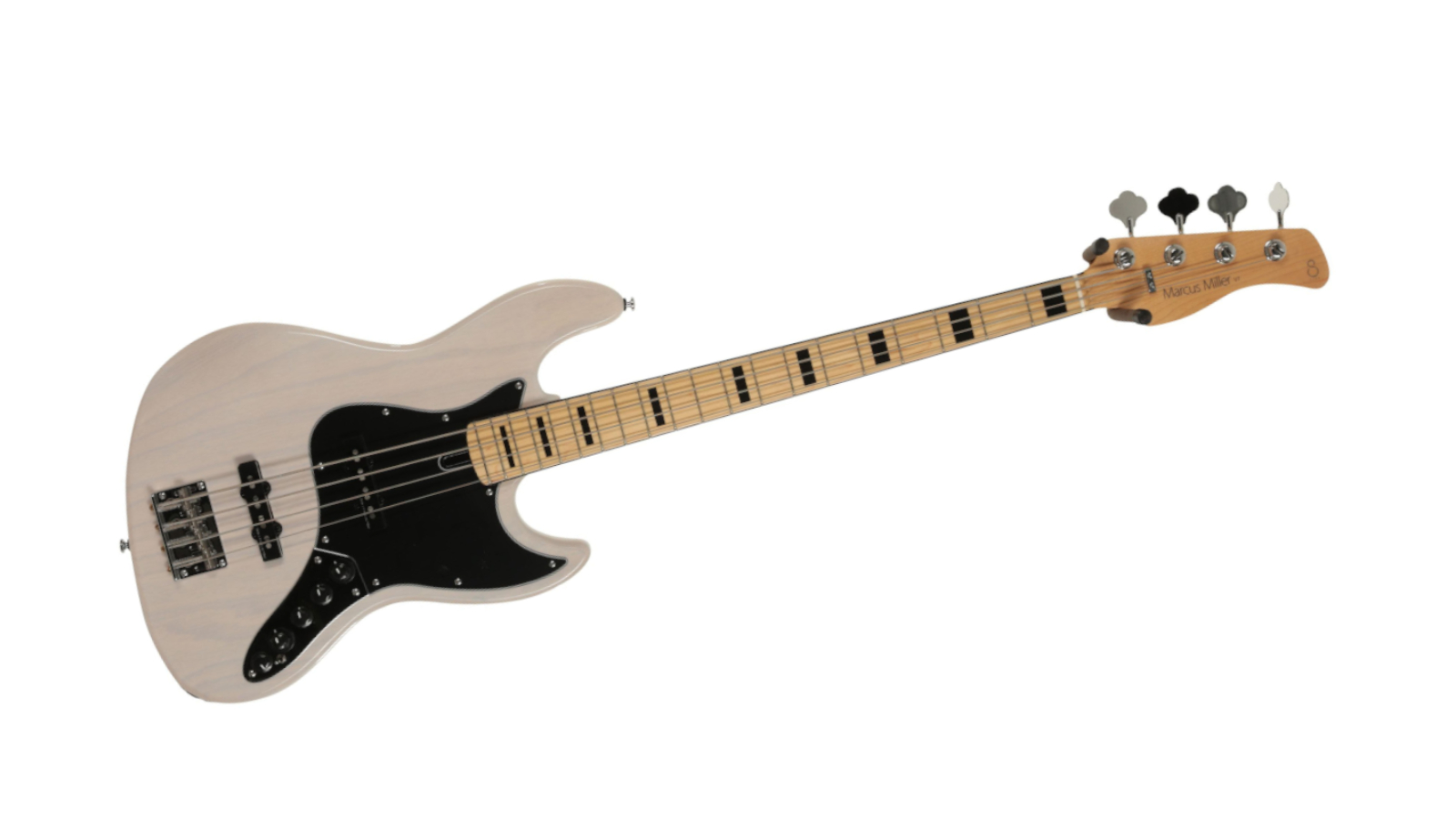
5. Sire Marcus Miller v7
Our expert review:
Specifications
Reasons to buy
Reasons to avoid
If we were giving prizes for being the most talked-about jazz bass that doesn’t have ‘Fender’ on its headstock, then the Sire Marcus Miller series would be a clear winner. Not without good reason, either. The Marcus Miller V7 combines the best build quality you’ll find under $/£500 with some meaty pickups and an onboard preamp with 3-band EQ for sculpting the tone you’re looking for quickly and easily.
Rolled fingerboard edges make this a comfortable bass to play too, making it a pretty compelling package for the price.
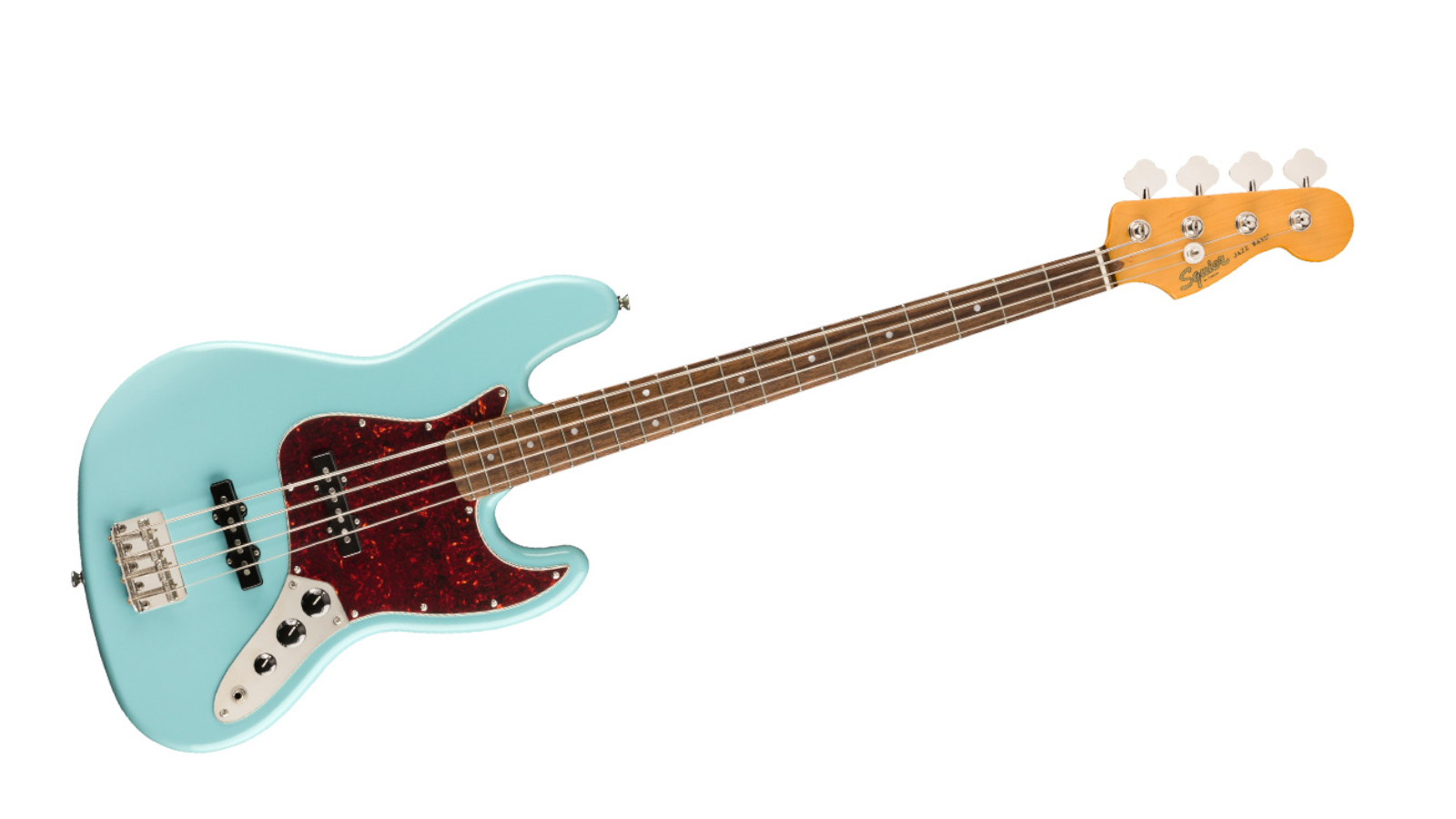
6. Squier Classic Vibe 60s Jazz Bass
Our expert review:
Specifications
Reasons to buy
Reasons to avoid
The Squier CV 60s Jazz Bass is modeled after the original jazz bass models from the ’60s, and brings with it a bunch of period-specific features. It has a comfortable C-shaped neck profile and a 9.5-inch radius fingerboard that makes it easy to play, along with the usual two single-coil pickups that can be blended together or used independently, giving you a wide range of tonal possibilities.
The body is made from alder which gives it a warm, resonant sound, and we were impressed with the hardware, including vintage-style tuners and a four-saddle bridge, which modern Squiers always seem to get right now. Overall, the Squier CV 60s Jazz Bass matches that classic Fender design, comfortable playability, and versatile sound at a price which many can afford.
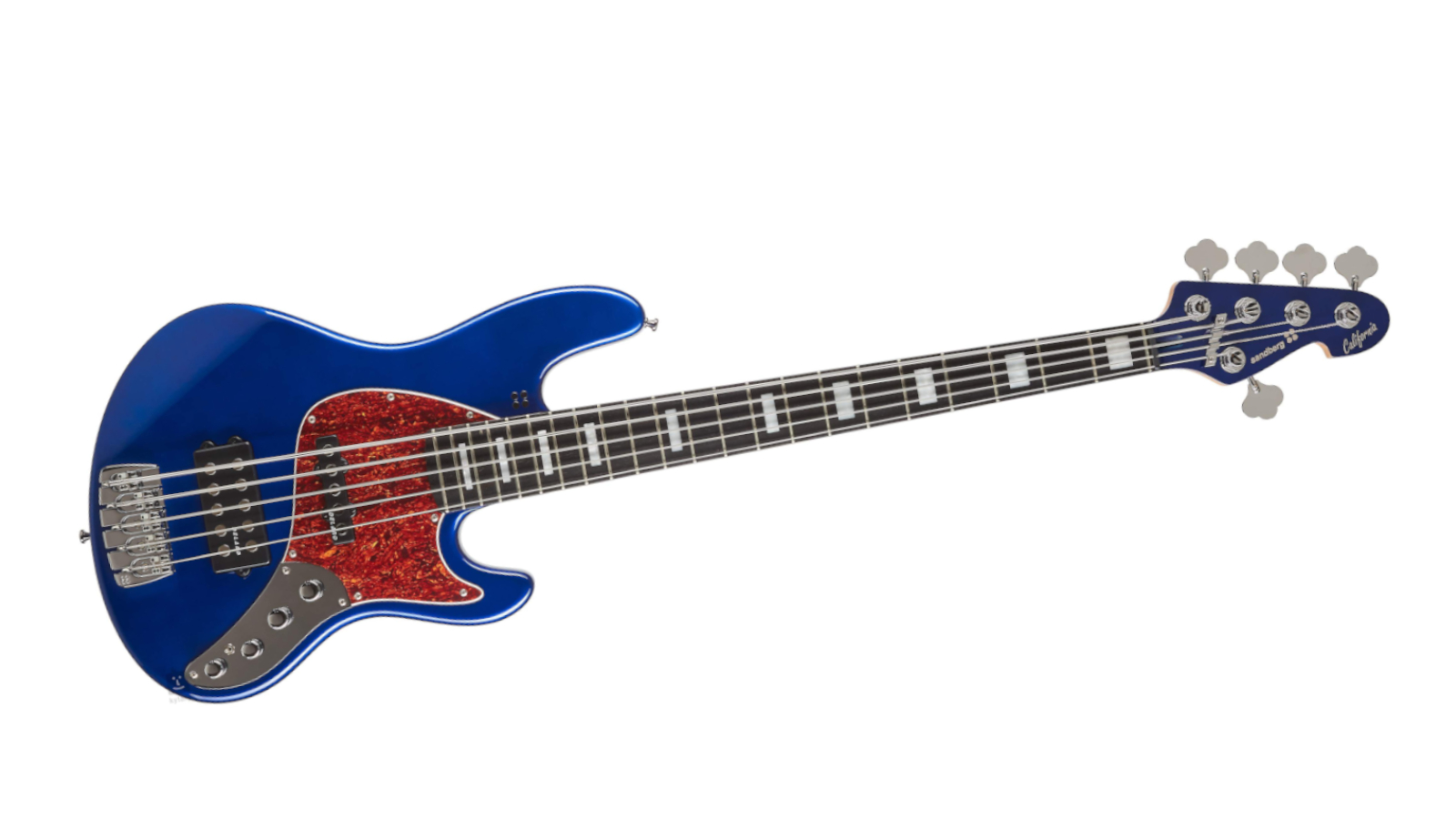
7. Sandberg California II TM5
Our expert review:
Specifications
Reasons to buy
Reasons to avoid
The Sandberg California range is one of the most respected high-end bass rosters around right now, and for good reason. These bass guitars marry up high quality materials with exceptional craftsmanship, making for some top-tier instruments capable of tackling any musical genre.
We’ve opted for the California II TM 5, on account of the additional string and superb Sandberg preamp system which allows you to dial in any tone you can think of. We should warn you though – this is a heavy instrument, so make sure you’re combining it with a suitably padded guitar strap…
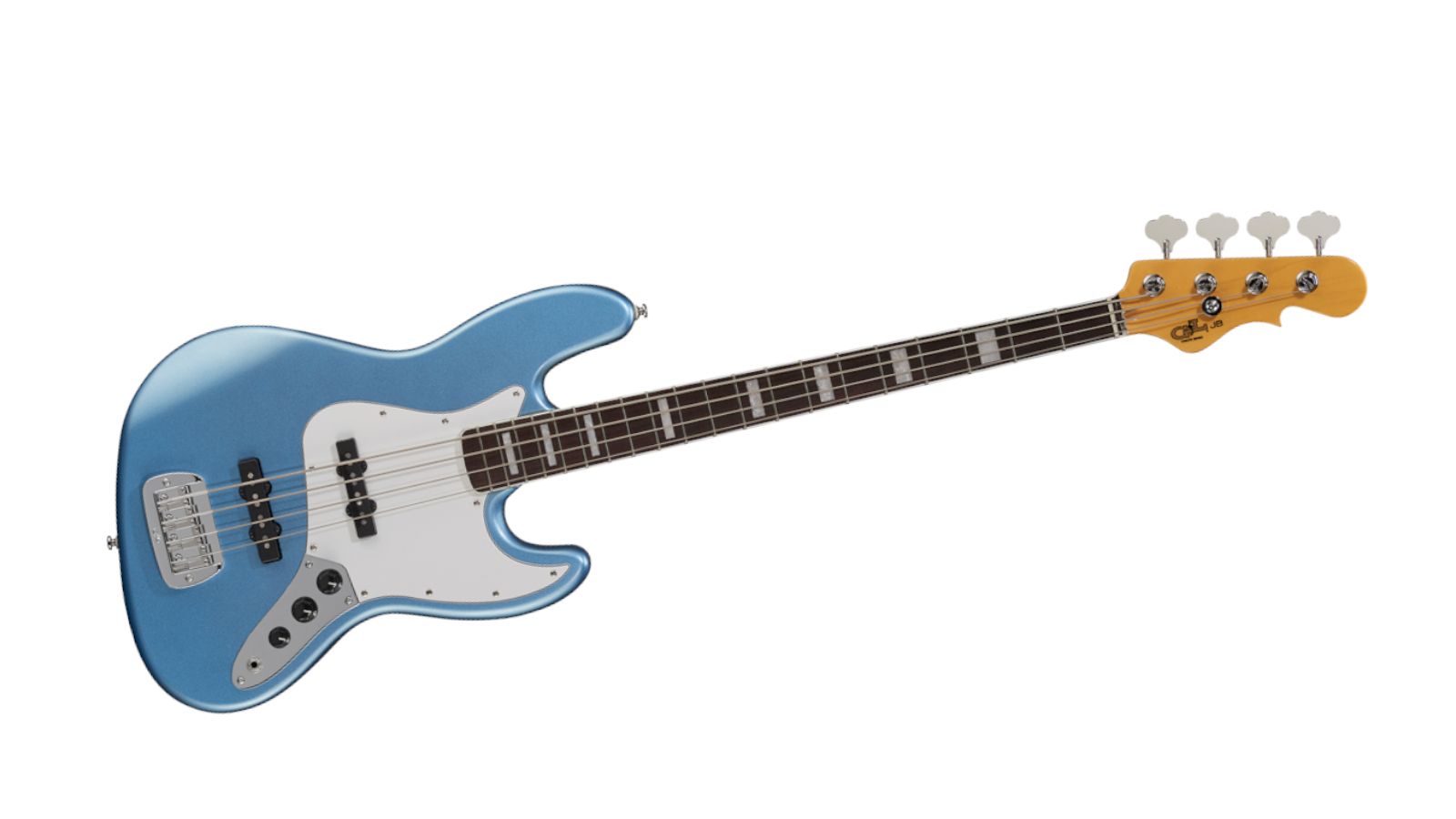
8. G&L Tribute Series JB
Our expert review:
Specifications
Reasons to buy
Reasons to avoid
We’ll round the list off with a tribute to the original jazz bass styles, coming from the G&L Tribute Series JB. Honestly, there’s not a lot that could go wrong with this guitar, from the Fender-designed saddle lock bridge to the stunning Lake Placid Blue finish on offer. This is, as you can tell, a genuine Fender in all but name.
Where this differs from a ‘true’ Fender is mostly in the tonewood – the cheaper poplar is present here, compared with the ash or alder you’d see on more expensive models. Regardless, this means this superb bass sits much closer to the affordable end of the scale, meaning more players can get their hands on one.
Best jazz bass: Buying advice
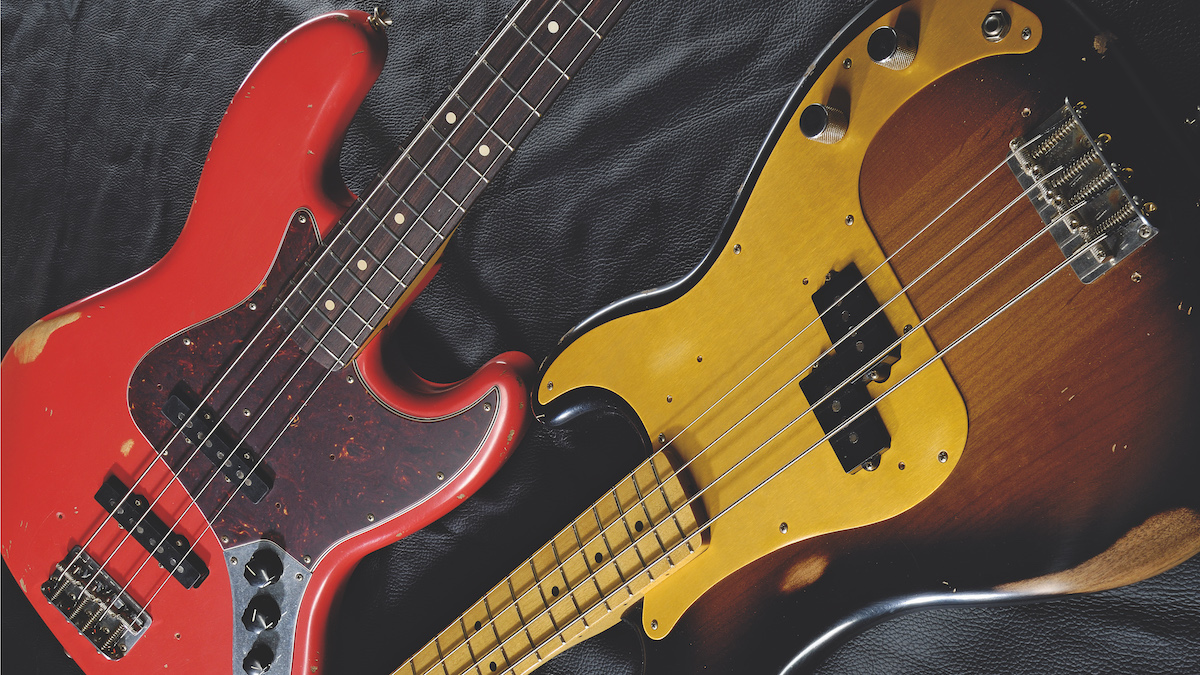
The history of the jazz bass
You can trust Guitar World
Coming hot off the heels of the mega-successful Fender Precision Bass, the Jazz Bass would be unleashed onto the newly formed bass community in 1960. This radical contemporary bass took much of its design cues from the company's new flagship Jaguar and Jazzmaster models and offered players not only a striking new look but also a bold new sound.
At the turn of the decade, Fender found a lot of success with their revolutionary offset guitars, so it makes sense that Leo would extend this design trend to his bass models, and thus the Jazz Bass was born. Now, the J-Bass wouldn't only sport a flamboyant new look. It would also offer players a completely different sonic experience when compared to its older brother, the P-Bass. Fender would use the Jazz Bass model to debut their new bass single-coil pickups – a pickup set that's just as popular today as it was back then.
The early Jazz Basses would feature a much thinner and more comfortable neck profile - coming in at 1 1/2″ at the nut - as well as a Brazilian rosewood fingerboard and clay dots.
Of course, as with any game-changing musical innovation, there were bound to be copycats – and that's precisely what happened. Many emerging manufacturers jumped on the J-Bass trend, taking Leo's now iconic design and running with it. This would lead to even more innovations and advancements in bass technology. Today companies such as Ibanez, Sandberg, Sire, Harley Benton and more make brilliant takes on the Jazz Bass formula, meaning you aren't restricted to only Fender instruments.
How to choose the best jazz bass for you
If you’ve settled on a jazz bass as your instrument of choice, then you can rest assured you’ve opted for one of the most versatile and comfortable bass styles on the market. There are, however, a lot of options even within the sub-genre of jazz bass models, including four and five-string versions, so let’s break down a few of the misconceptions and help you choose the model that works best for you.
Naturally, budget will be a major factor in your decision-making. With jazz basses starting from as low as $/£150, and heading right up towards the $/£5k mark, you can be sure there will be a model to fit your specific requirements. But what does the extra money get you, in terms of specification? As with guitars, expensive jazz bass models will have higher quality hardware – think tuning pegs, bridges and electronics – meaning they will last longer and will be more durable.
Likewise, the choice of pickups on an expensive bass will go a long way to opening up the tones available to you. Price will also dictate which tonewoods are used for the body, neck and fingerboard. Some are chosen for their weight – a jazz bass is a large instrument, after all, so smaller players may prefer a model with a lighter tonewood, like poplar. Other tonewoods are selected because they impart specific tonal qualities, like alder which provides a bright sound, or ash, which offers a richer, more resonant tone.
Whichever end of the price spectrum you’re shopping at, there are some qualities specific to every model of jazz bass. Things like the slightly smaller neck (compared to a P-Bass), which makes it ideal for smaller hands. Or the better balance the jazz models achieve by offsetting the body weight slightly, making it better for playing standing up.
Overall, the jazz bass is a versatile instrument that can be used for a variety of genres, but it does have its strengths and weaknesses. For example, the jazz bass is known for its bright, punchy sound, which makes it a good choice for genres like funk and jazz. However, the jazz bass's sound can be a bit too bright for genres like rock and metal. The best advice we can give is to try a few models out and see which feels the best, offers the most comfortable playing experience, and gives you the sound you’re looking for.
How we choose the best jazz basses for this guide
Here at Guitar World, we are experts in our field, with many years of playing, creating and product testing between us. We live and breathe everything guitar gear related, and we draw on this knowledge and experience of using products in live, recording and rehearsal scenarios when selecting the products for our guides.
When choosing what we believe to be the best jazz basses available right now, we combine our hands-on experience, user reviews and testimonies and engage in lengthy discussions with our editorial colleagues to reach a consensus about the top products in any given category.
First and foremost, we are guitarists, and we want other players to find the right product for them. So we take into careful consideration everything from budget to feature set, ease of use and durability to come up with a list of what we can safely say are the best jazz basses on the market right now.
Find out more about how we make our recommendations, how we test each of the products in our buyer's guides and our review policy.
Related buyer's guides
- Best beginner bass guitars: four-string basses for beginners
- Best bass amps: low-end amplification options for bassists
- Best bass strings: for the best tone, feel and lifespan
- Best bass effects pedals: FX for every type of bassist
- Best budget bass guitars: our top picks under $500
All the latest guitar news, interviews, lessons, reviews, deals and more, direct to your inbox!
Chris Corfield is a journalist with over 12 years of experience writing for some of the music world's biggest brands including Orange Amplification, MusicRadar, Guitar World, Total Guitar and Dawsons Music. Chris loves getting nerdy about everything from guitar gear and synths, to microphones and music production hardware.
- Daryl RobertsonSenior Deals Writer

